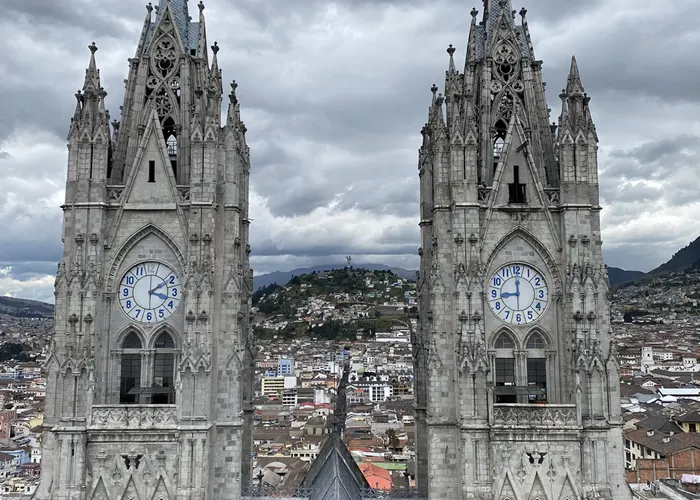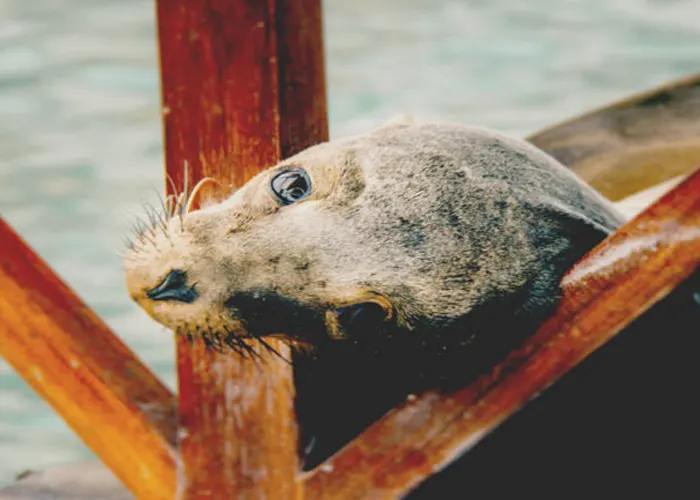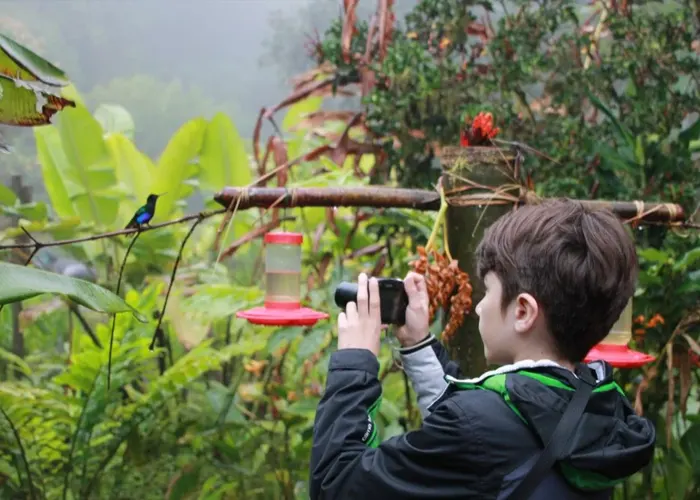Cacti on Galapagos - the amazing flora

SOLEQMASTER
In previous articles about the Galapagos, we have primarily focused on the impressive fauna of the islands. But the flora of the islands is also amazing. There are around 560 species on the islands, of which around a third are endemic. As with the animal species, the plants have developed differently from their relatives in other regions due to their island location and extensive isolation. In the following, we would like to introduce three cactus species that are common on the islands: the lava cactus, the prickly pear cactus and the columnar cactus.
Lava cactus
The lava cactus (Brachycereus nesioticus) is one of the endemic plant species found mainly on the islands of Santiago, Bartolomé, Isabela, Fernandina and Genovesa. It consists of a large number of shoots with a diameter of around 3 – 5 centimetres, which grow upwards from the middle up to 60 cm and form dense cushions. The newly grown parts can be recognized by their yellowish color at first. Later they first turn brownish, then gray. Small, cream-colored flowers grow at the tips, but these can only be seen in the early hours of the morning; they usually wither before eight o’clock. The cactus has soft, hairy thorns on all parts, which can grow up to 5 centimeters long and protect the cactus from attackers. Lava cacti are among the first species to colonize a fresh lava flow, paving the way for other plant species. The species has no longer been considered endangered since 2013.
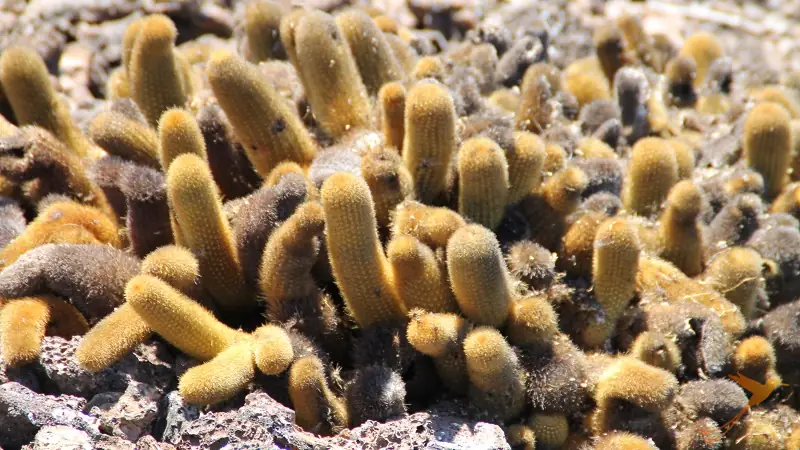
Prickly Pear cactus
The prickly pear cactus, also known as the tree opuntia, is found all over the world and is also the most common cactus on the Galapagos Islands. It grows in the dry and transitional zones of most islands. The subspecies megasperma (giant opuntia) and echio are common on the Galapagos. The giant opuntia subspecies on Española is considered endangered, which is probably due to the introduction of goats and the decline of giant tortoises there. The largest opuntias reach up to 12m in height and grow up to 1m thick. The trunks are covered with stiff little hairs and spines and the species has flowers that later develop into small orange-red fruits covered with thorns. Its flat, cushion-like leaves (cladodes) and juicy fruits are an amazing adaptation to the aridity of the islands. The fruits serve as food and habitat for many animal species, including Darwin’s finches, land iguanas and giant tortoises.
One of the ways in which opuntias are spread on the Galapagos is by rice rats. After they have eaten the fruit, their seed shells are damaged by the rats’ gastric juices, which facilitates germination. If the seeds hit the ground again after being excreted, they can form roots more easily.
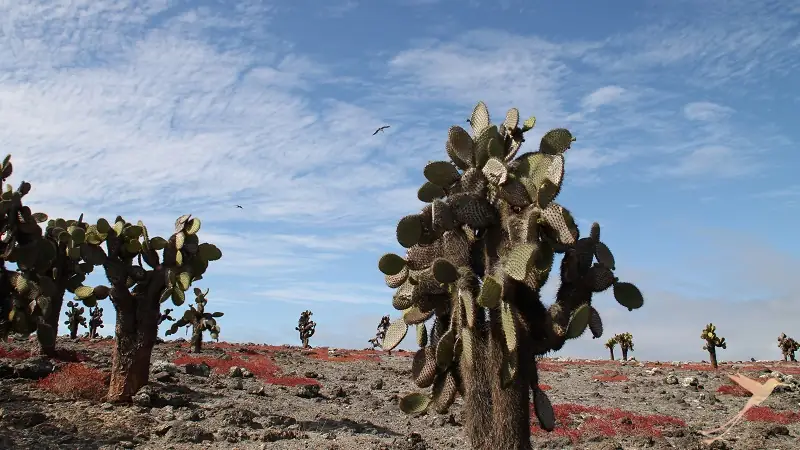
candelabra cactus
The candelabra cactus (Jasminocereus thouarsii) honors its name because it has a columnar, upright shape like a tree. The columnar shape ensures its survival in dry and rocky areas, as it can store water in its stems. Its botanical name refers to the similarity of its flowers to jasmine. It grows up to 7m tall and has cylindrical, ribbed shoots up to 50cm long, which are yellowish-green to brownish in color. A characteristic feature of this species is that its shoots are covered with up to 5cm long spines and 6cm long white-green flowers. These open at night. The cactus also grows oval fruits in a greenish to purple-red color, which can reach a length of up to 10 cm. The three species of cactus are found on eight of the Galapagos Islands. They are an important food source and habitat for bird species such as Darwin’s finches and the Galapagos pigeon.
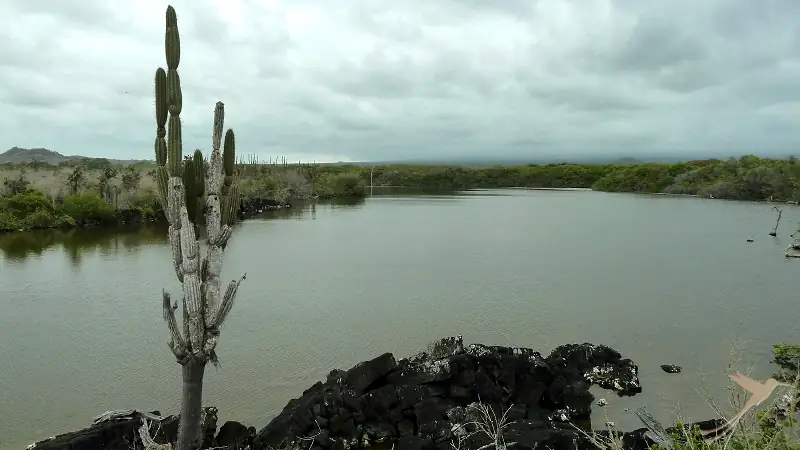
If you would like to see the different cactus species on the Galapagos up close, we would be happy to take you on a cruise or island hopping trip to the enchanted islands. Of course, you can also combine the Galapagos trip with a tour on the mainland.
visit our other channels
Recent Posts
- From Manglaralto to Pacoche and surroundings April 18, 2024
- Excursions within the rainforest region of Ecuador April 5, 2024
- Ecuador in a state of emergency?! My personal experience March 22, 2024
- The 10 most beautiful lakes and lagoons in Ecuador – Part 2 March 12, 2024
- The 10 most beautiful lakes and lagoons in Ecuador – Part 1 February 23, 2024
